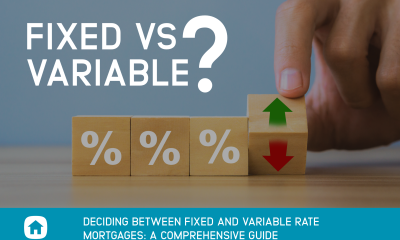Canadian debt loads hit a new high in the fourth quarter of 2017, climbing to 1.8 trillion owed, according to a report issued by credit rating agency Equifax. The exact debt level now sits at $1.821 trillion, up from $1.797 trillion in the third quarter of 2017.
Equifax reported growth across many sectors of lending including instalment loans (10.3%), auto loans (6.5%), and mortgages (6.2%). These year-over-year increases contribute to the average Canadian now owing $22,837.
Canadians Managing Higher Debt Loads Well
While these numbers may seem alarming at first, Regina Melina, a senior director of decision insights at Equifax Canada said that a deeper dive into the numbers reveals some encouraging insights. First, despite the increasing debt loads, Canadians are still making their mortgage payments on time. On top of that, about 46 percent of Canadians paid down their debt last year, and 16 percent did not go any further into debt.
37 Percent of Canadians Going Deeper Into Debt
Unfortunately, that still leaves 37 percent of Canadians who added to their debt load. It’s these Canadians who are most at risk – and it’s attracting the attention of the world. A report from the Bank for International Settlements (BIS), an organization made up of 60 national banks around the world, cited Canada as among the countries with a high risk of financial crisis.
On top of that, a recent RBC forecast predicts that Canada’s economy is expected to slow this year, meaning those 37 percent of Canadians who are taking on more debt could be in for a bumpy ride if unemployment rates inch up.
The Equifax report is not telling us anything we don’t know. Canadian debt levels have been a problem for several years now, and while we seem to be handling our debt loads now, the Canadian debt-to-income ratio sits at a record 171 percent, meaning Canadians owe an average of $1.71 for every $1.00 of income they earn. This much debt will make life harder by putting Canadians at risk if the economy slows.
How to Protect Yourself Against Excessive Debt
Fortunately, a risky debt situation can be remedied, and if you’re one of the 37 percent of Canadians who took on more debt last year, here’s what you can do to protect yourself.
Pay off Credit Card Debt
The average Canadian has $2,627 in credit card debt. If you carried this balance on your credit card with an interest rate of 20%, and you only made the minimum payment, it would take you 16 years and 11 months to pay off your credit card, and you would pay $3,024 in interest charges.
Fortunately, you can shorten your debt payoff timeline significantly with a few simple adjustments. For example, instead of making the minimum payment on your credit card and incurring those high-interest fees, consider transferring the balance to a lower interest debt tool and pay it off faster. Lines of credit or balance transfer credit cards are both good options, just make sure to avoid running your credit card up after you pay it off.
Pay Down Your Mortgage
If you have a fixed rate mortgage, you may not feel the pain of rising interest rates right away. But if your mortgage is up for renewal soon, consider mitigating the damage of higher interest rates by paying down your mortgage. There are two primary ways to do this.
First, you can make a lump sum payment. Lump sum payments are often an option once a year, and you’re limited to a certain percentage of your balance. Make sure to check your mortgage documentation to determine how much you are allowed pay down. Alternatively, you could increase your monthly payment. Monthly payment increases let you pay off your mortgage quicker even if you don’t have a lump sum to contribute. Finally, if you can’t afford a lump sum payment or adding money to your monthly payment, you could also change your payment terms to make payments more frequently, such as switching from monthly payments to biweekly payments.
Build a Cash Cushion
If you’re debt free and you’re comfortable with your mortgage payments, there is still one more thing you can do to insulate yourself against financial strife, and that builds an emergency fund. An emergency fund is a lump sum of cash that will protect you if the economy contracts and you lose your job. It will tide you over during an emergency car repair or help you if you renew your mortgage at a higher rate. A typical emergency fund will cover three to six months of bare-bones living expenses, which for most Canadians amounts to between $5,000 -$15,000.
Canada’s rising debt levels are certainly cause for concern, but with some planning and careful financial management, you can insulate yourself against potential ramifications. Make sure to stay within your budget, pay down your debt and don’t take on a mortgage that is larger than you can afford.
Sources:
https://www.creditsolutions.ca/blog/233-how-does-your-debt-compare-to-the-average-canadian
https://www.thestar.com/business/economy/2017/12/14/canadas-debt-to-household-income-ratio-rises-to-171-per-cent-statcan-says.html
http://www.rbc.com/economics/economic-reports/pdf/quarterly-economic-update/fcst_mar2018.pdf
https://www.bis.org/publ/qtrpdf/r_qt1803.pdf
https://www.consumer.equifax.ca/about-equifax/press-releases/

 Buying a Home5 years ago
Buying a Home5 years ago
 Credit6 years ago
Credit6 years ago
 Business4 years ago
Business4 years ago
 5 Mortgage Secrets7 years ago
5 Mortgage Secrets7 years ago
 Buying a Home6 years ago
Buying a Home6 years ago
 5 Mortgage Secrets6 years ago
5 Mortgage Secrets6 years ago
 News12 months ago
News12 months ago
 Business4 years ago
Business4 years ago





